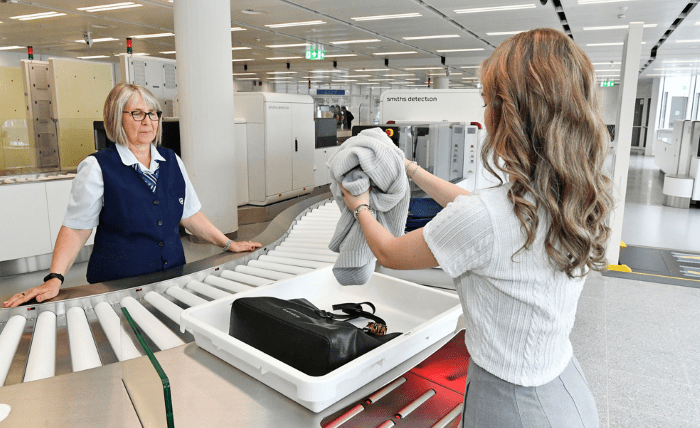The aviation industry has seen remarkable advancements over the years, particularly in enhancing passenger safety. As air travel continues to grow in popularity, so does the need for effective and efficient airport security systems. Innovations in technology and procedures are continuously being developed to ensure that passengers can travel safely and with peace of mind. This article explores some of the latest advancements in airport security that not only streamline processes but also bolster safety measures.
Biometric Screening Technology
One of the most significant advancements in airport security is the implementation of biometric screening technology. Airports around the world are increasingly adopting facial recognition systems that can verify a passenger’s identity in a matter of seconds. This technology uses advanced algorithms to scan and analyze facial features, allowing for quick and accurate identification.
Biometric screening not only enhances security by making it more difficult for individuals to use false identities, but it also improves the passenger experience by reducing wait times at checkpoints. With faster processing, travelers can move through security with minimal hassle, allowing them to focus on their journey rather than the stress of airport procedures.
Automated Screening Lanes
Another notable innovation in airport security systems is the introduction of automated screening lanes (ASLs). These lanes utilize advanced conveyor belt systems and automated trays, allowing passengers to place their belongings in bins without the need for assistance from security personnel. ASLs also have a unique feature that enables them to continuously process passengers, minimizing bottlenecks during peak travel times.
By automating the screening process, airports can significantly improve efficiency while maintaining high standards of safety. Passengers can expect a smoother experience, and security personnel can focus their attention on monitoring for potential threats rather than managing the flow of travelers.
Enhanced Explosives Detection
Advancements in technology have also led to improved explosives detection systems that play a crucial role in airport security. Traditional screening methods have been supplemented with sophisticated imaging systems that use multiple detection techniques to identify potential threats.
For instance, advanced computed tomography (CT) scanners provide 3D images of carry-on luggage, allowing security personnel to examine the contents in detail. These scanners can differentiate between benign items and potential explosives more effectively than previous technologies. As a result, security teams can focus on high-risk bags and passengers, significantly enhancing the overall safety of the airport environment.
Artificial Intelligence and Machine Learning
The integration of artificial intelligence (AI) and machine learning into airport security systems is revolutionizing the way security threats are identified and managed. AI algorithms analyze vast amounts of data from various sources, including surveillance feeds and passenger behavior patterns, to identify anomalies that may indicate a security risk.
By employing AI, airports can enhance their situational awareness and respond more effectively to potential threats. Machine learning systems are continuously evolving, adapting to new patterns and trends, making them more effective over time. This proactive approach to security allows airports to stay ahead of emerging threats and enhances the overall safety of passengers and staff.
Mobile Security Applications
The rise of mobile technology has led to the development of security applications that enhance passenger safety during their journey. Many airports are now offering apps that provide real-time updates on security wait times, terminal information, and even guidance on what items can be brought through security.
These applications can improve the passenger experience by allowing travelers to plan ahead and avoid congested areas. Additionally, they can enhance security by enabling better communication between airports and passengers, ensuring that any potential issues are addressed promptly.
Collaboration and Information Sharing
In today’s interconnected world, collaboration among security agencies, airports, and airlines is more crucial than ever. Information sharing platforms are being developed to facilitate better communication and coordination among various stakeholders in the aviation industry. These platforms allow for the exchange of intelligence related to threats, incidents, and best practices in security.
By fostering collaboration, airports can enhance their security measures and improve their ability to respond to potential threats. Joint exercises and training programs among different agencies also help create a more unified approach to passenger safety, ensuring that all parties are prepared for any situation that may arise.
Focus on Mental Health and Behavioral Detection
Recognizing that many security threats can be mitigated through behavioral analysis, airports are increasingly training security personnel to identify signs of distress or unusual behavior among passengers. This focus on mental health and behavioral detection is a proactive approach to passenger safety, allowing security teams to address potential threats before they escalate.
By understanding the psychological aspects of security, airports can create a more compassionate and responsive environment for travelers. Training programs that emphasize empathy and observation skills help security personnel identify individuals who may require assistance or pose a risk, enhancing overall safety.
Safety First
Enhancing passenger safety in airports is an ongoing challenge that requires constant innovation and adaptation. The advancements in airport security systems—from biometric screening and automated lanes to AI integration and collaboration among agencies—demonstrate a commitment to creating a safe and efficient travel experience. As technology continues to evolve, it is paramount that the aviation industry remains vigilant and responsive to emerging threats, ensuring that passengers can fly with confidence and peace of mind. The future of airport security lies in the synergy between cutting-edge technology and a human-centered approach, creating an environment where safety is prioritized without sacrificing convenience.

